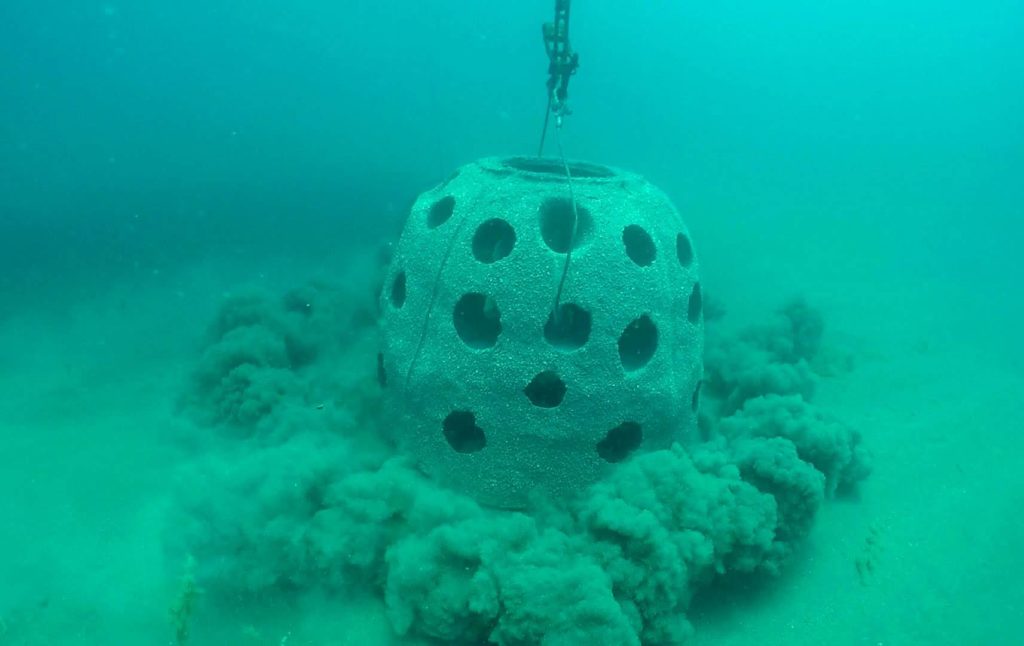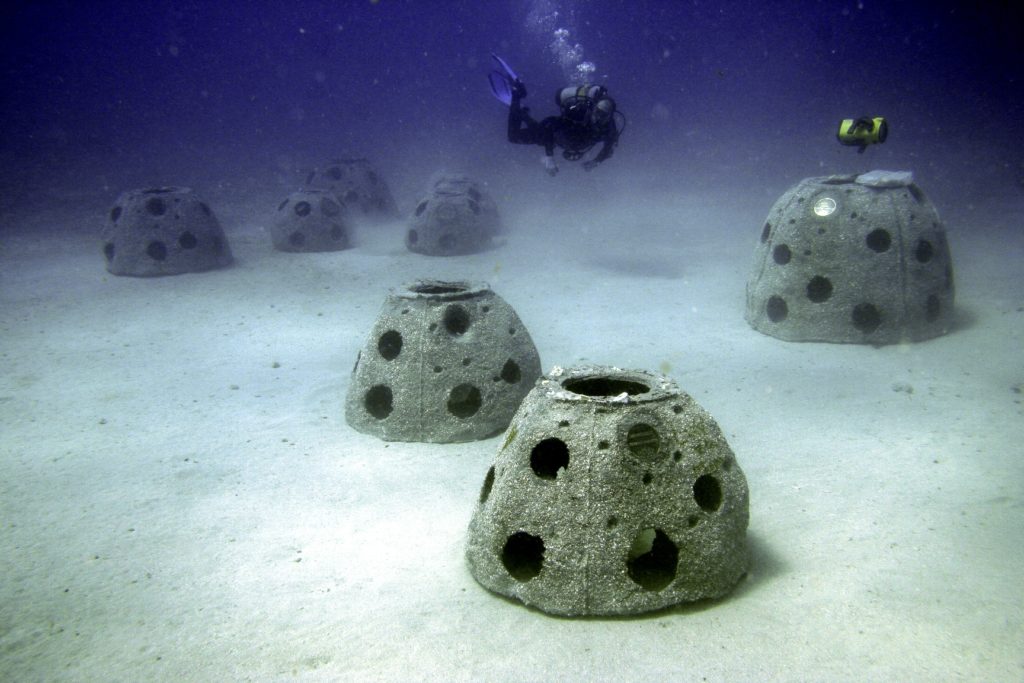4 Mins Read
It’s now possible to choose a sustainable, concrete-laden burial at sea, following cremation, for your last wish.
Advocates of the practice claim that it is a way to support marine ecosystems, by providing habitats for various species and surfaces for coral to grow on. The creation of artificial reefs is an idea that has garnered the new burial trend a degree of popularity. Some environmentalists are unimpressed by the practice, citing gimmicky remains handling as a continuation of an emissions-heavy industry.
On the face of it, having your cremated ashes poured into pH-neutral concrete and dropped into the sea as a ‘reef ball’ sounds appealing. Especially for ocean lovers. There are elements to consider for true eco-awareness, however.

The case for reef ball burials
Marine habitats and natural coral reefs are in decline. Commercial fishing and human exploration have tipped the balance towards unsustainable damage. In a bid to help concerned ocean fanatics and environmentalists to keep making a positive impact after they’re gone, companies are now offering reef ball burials.
The concept is simple. pH-neutral concrete is used to cast a perforated ball structure. Into the mix go the cremated remains of someone who has passed away. The ball is then dropped onto a regulated sea bed, where it is reclaimed by nature and used as habitat support. Bereaved family members are given the exact GPS coordinates of relevant balls, so they can pay their respects whenever they choose.
It all sounds rather lovely. Coral can grow on the rugged surface of the concrete, fish can live inside the structures and slowly, the underwater landscape can be reclaimed by the entities that are supposed to live there. It taps into a traditional trope of being returned to the sea once we pass as well, adding a romantic element into play. From burning funeral pyres floated out into the great wet beyond to ashes being ceremoniously scattered in the waves, the connection between death and water is long-established and now, is gaining popularity.
Eternal Reefs, a Florida-based charity offering the reef ball burial service, claims to have seen a tripling of requests for its offering during the pandemic. It admits that most have come from people who have loved and maintained a deep connection to the sea during their lives and want to continue to give back after they have gone. The notion of regenerating underwater ecosystems has proved comforting.

An answer to calls for eco-friendly funerals?
In recent years, the costs, both financial and environmental, of funerals have come under scrutiny. Alongside concerns about funeral poverty, with average service prices reaching £3,837 in 2020, ethical remains handling has become a conversation topic.
Regular burials are considered to take up too much land. Cremation causes carbon emissions. So, what is the answer? New services have begun springing up, with composting, the rather dark-sounding dissolving and “living coffins” made from mycelium all being offered. However, each comes with the same concern: is it just a greenwashing gimmick and a profitable enterprise?
Eternal Reefs charges between £2,200-£5,500 for their reef balls. The charity claims that the money collected helps to fund more artificial reefs. The cost is additional to cremation pricing. Other companies are looking to do the same thing, leveraging global seabeds for memorial spots. Each states that marine protection is the primary concern. This has been questioned by environmentalists.
Why reef balls may not be the answer
Cremation of a body releases, on average, 540 pounds of CO2. depending on the age of the crematorium, the amount of fossil fuel used in the burning process will vary. Next comes the concrete. The Guardian revealed the extent of the cement-making industry’s environmental impact, with key players pledging to reduce their emissions. As it stands, the concrete sector is responsible for 8 percent of global CO2 production. These two elements combined mean that true eco-activists are unlikely to set aside their concerns for a trendy burial at sea.
Natural burials are still considered by many to be the greenest option. Avoiding embalming fluids and opting for simple biodegradable casings allow for a circular burial process to be initiated. Once the body has decomposed, nourished the soil and contributed to the surrounding ecosystem, the land can be reused for somebody else.
Paris made headlines in 2019 when it opened its first green cemetery. It was approved as part of the city’s commitments to be carbon neutral by 2050. Officials claimed that no element of modern life could be ignored in the quest, including death.
Lead photo by 7inchs from Pexels.




